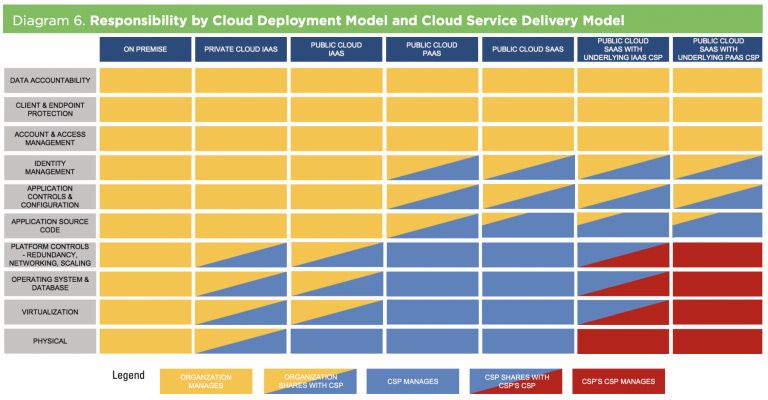
Cybersecurity threats abound, and the pace of cybersecurity attacks is increasing steadily year after year. At the same time, consumers are also becoming more aware of cybersecurity harms, and demanding better performance from the companies with which they do business. Regulators hear that sentiment from consumers too, and are responding with ever more stringent rules for data privacy.
For these reasons and more, a robust cybersecurity architecture has never been more important. In this article, we’ll explain what a cybersecurity architecture is, why it’s important, and how your organization can get started on the worry-free path toward designing and implementing a successful cybersecurity architecture.
What Is Cybersecurity Architecture?
Cybersecurity architecture, also known as network security architecture, is the practice of designing computer systems to assure the security of your underlying data. Generally speaking, cybersecurity architecture is at the foundation of your organization’s defense against security threats.
Working as one component of an organization’s overall security architecture, cybersecurity architecture is typically designed using a cybersecurity architectural framework – that is, a framework that specifies the structure, standards, policies, and functional behavior of a computer network, including both security measures and network features.
A framework will help your organization identify security risks and then position security controls to address them. It will also show you how your security controls relate to your overall business. Ideally, a cybersecurity architecture framework will allow your organization to maintain confidentiality, integrity, and availability of the data within its business operations.
Your cybersecurity architecture framework should be flexible enough to adapt and provide security coverage for your business despite the constantly evolving cyber threat landscape. It should encompass three main elements, which we will further explore in a moment: procedural and policy-related elements, standards and frameworks, and security and network elements.
Most businesses already have at least some elements of cybersecurity in place, including firewalls, antivirus programs, and intrusion detection systems. A detailed cybersecurity architecture should integrate these elements to maintain and maximize these tools alongside your policies and procedures. That said, firewalls, antivirus programs, and intrusion detection systems only address external threats – which is not enough in the modern threat environment.
For this reason, many organizations are employing a “zero trust” model, which calls on verifying every request irrespective of whether the users are inside or outside the perimeter. By using access control and establishing several checkpoints within a network, organizations are able to limit their exposure to malware infiltration.
Although businesses can and should do more to build network security systems independently, many simply do not possess the necessary technologies to do so. If this sounds like you, you might want to consider hiring a cybersecurity architect: a security professional who will help you to anticipate potential cyber threats and design the structures and systems that will prevent them. For many organizations, hiring a cybersecurity architect is the best way to identify system vulnerabilities and remediate them as quickly as possible.
Now that we have some context, we can take a closer look at some of the components that make up a robust cybersecurity architecture. Then we’ll further explain why a cybersecurity architecture is critical for your business, and how you can get started on the worry-free path toward designing and implementing a successful cybersecurity architecture framework.
What Are the Components of Cybersecurity Architecture?
Even if you decide to hire a security architect to do all of the heavy lifting, the success of that endeavor hinges on your employees’ ability to work according to the processes laid out in your security architecture framework. Enforcing your cybersecurity architecture once it’s been created will require a continuous flow of information throughout your organization.
People, Policies and Procedures
People – your employees, stakeholders, decision-makers, and anyone else who touches your enterprise – are the first (and most often overlooked) component of a cybersecurity architecture. The people, along with processes and tools, should all work together to protect your company’s assets.
Throughout your organization, the people, processes, and tools you use to create and enforce a cybersecurity architecture will all be driven by your organization’s security policy. A security policy is a statement that outlines how each entity within your organization will access other entities, what operations those various entities can carry out, the level of protection that’s required for each system, and the actions that should be taken when these security requirements are not met.
Your security policy, as well as any other policies related to your cybersecurity architecture, needs to be clear and easy to understand. If your employees don’t understand the “why” behind a policy, they’re far less likely to follow the “how” – meaning, the procedure associated with the policy.
A well-rounded cybersecurity architectural framework should recognize the need for clear, concise, and explicit policy documents that make it easy for your employees to formulate the necessary procedures. Additionally, you should require staff training whenever implementing or updating policies and procedures, so that your employees have the opportunity to learn and ask questions.
Your cybersecurity architecture’s policies and procedures need to be directed and enforced throughout your organization. Ideally they should be definable and simulatable using industry-standard architecture and modeling language.
As more and more regulations are starting to require the production of relevant policies and appropriate procedures for compliance, this element of a cybersecurity architecture is becoming increasingly important. This requirement, coupled with the need to educate employees adequately, underlines just how important policies and procedures really are to the success of a cybersecurity architecture.
Standards and Frameworks
In many cases, compliance with industry standards is not only legally required, but also a great way to improve your organization’s overall cyber hygiene. To better understand cybersecurity architecture and its role, you should start by looking at pre-existing standards and the frameworks that support them.
Standards set out what must be achieved by various organizations in different industries. For example, the following information security standards require the protection of personal data or sensitive information:
- International Organization for Standardization (ISO 27001)
- The Payment Card Industry Data Security Standard (PCI DSS)
- The European Union’s General Data Protection Regulation (EU GDPR)
- California Consumer Privacy Act (CCPA)
- Health Insurance Portability and Accountability Act (HIPAA)
These are just a few of the many standards that are required for organizations in specific industries and are enforced by law. Which standards your organization needs to meet will depend on your business operations, so it’s important to familiarize yourself with those that are relevant to you. Industry standards and regulations change often, so you’ll need to revisit them frequently to make sure your organization is always compliant.
As far as frameworks are concerned, probably the most important and widely recognized cybersecurity framework in the United States is the National Institute of Standards and Technology Cybersecurity Framework (NIST CSF). This framework covers five broad domains (identify, protect, detect, respond, and react), and includes categories and subcategories for each.
NIST CSF also provides an overview of the separate but interconnected areas that must be addressed when assessing the appropriateness and effectiveness of a given cybersecurity architecture. Ultimately, this allows organizations to measure the relative security and level of compliance being provided by their existing cybersecurity architecture.
If you decide to base your own cybersecurity architecture on an existing framework, choose one that meets the needs of your organization. Even if you decide to start from scratch, visiting these existing frameworks and standards can give you a better starting point for your own cybersecurity architecture.
You should also take into consideration the technology standards for any of the cybersecurity software choices you make. The security solutions you rely on to execute your cybersecurity architecture should ideally align with your organization’s security standards as well as any compliance requirements.
Network and Security
Finally, your cybersecurity architecture will need to include more specific network and security elements to keep your organization’s systems secure.
Make sure you include the following network elements in your cybersecurity architecture:
- An inventory of network nodes including computers, NICs, repeaters, hubs, bridges, switches, routers, modems, gateways.
- Your network communication protocols (TCP/IP, DHCP, DNA, FTP, HTTP, HTTPS, and IMAP).
- Any network connections between nodes using specific protocols.
- Network topologies among nodes such as point-to-point, circular, chain, and hybrid.
You also need to account for the following security elements in your cybersecurity architecture:
- Any cybersecurity devices like firewalls, Intrusion Detection/Protection Systems (IDS/IPS), and encryption/decryption devices.
- Cybersecurity software (anti-virus software, spyware software, and anti-malware software).
- Secure network communication protocols (TCP/IP, DHCP, DNS, FTP, HTTP, HTTPS, and IMAP).
- Strong encryption techniques such as end-to-end encryption, zero-knowledge privacy, and blockchain.
- Multi-factor authentication, and any other identity and access management practices.
Why Is Cybersecurity Architecture Important?
Generally speaking, the purpose of a cybersecurity architecture is to assure that the main network architecture of your organization, including its most sensitive data and critical applications, is fully protected against any present or future threats or security breaches.
A well-implemented and enforced cybersecurity architecture will enhance cybersecurity and help your organization adhere to more stringent data privacy regulations as they arise, and increase your marketability in an ever-increasing cyber-conscious market.
When done correctly, a successful cybersecurity architecture will be most evident in three key areas to your organization: regulatory compliance, your bottom line, and overall information management.
Regulatory Compliance
A cybersecurity architecture is often key in demonstrating compliance to many data protection regulations. Most organizations confront a variety of data regulations, especially those conducting business internationally.
These days, most data protection regulations call for some form of a cybersecurity architecture. While different regulations have different information management requirements, a strong cybersecurity architecture should transcend those differences. Simply having one in place will almost always be seen as a positive to any regulatory body.
Bottom Line
As stated above, consumers are becoming increasingly more aware of cybersecurity issues and how those issues can affect their lives. Use that as an opportunity to market your superior cybersecurity to your consumers. Businesses with more transparency are more likely to win customers’ trust, especially those who have fallen victim to security incidents in the past.
A solid cybersecurity architecture can also act as a form of insurance to a number of potentially disruptive scenarios, which also protects your business’s bottom line. An active approach to cybersecurity is usually much more successful than a defensive or a reactive one, as the cost of recovering from a security incident can often outweigh the initial investment needed to implement a cybersecurity architecture.
Information Management
How your organization deals with its data can mean the difference between success or failure. Integrating a cybersecurity architecture throughout your organization can streamline your data management process, with the added benefit of protecting your systems’ information network.
Ideally, a cybersecurity framework should align the risk management process with your underlying business strategies with little to no interruption to the day-to-day running of your business.
Build a Stronger Cybersecurity Architecture With ZenGRC
If building and enforcing a robust cybersecurity architecture sounds overwhelming, you’re not alone. Creating open communication channels, training employees, designing and implementing policies and procedures, tracking compliance, enforcing network and security elements – these tasks can be complicated and time-consuming, especially if you’re working in spreadsheets.
ZenGRC gives you the power to be more strategic with IT risk management by putting your business activities front and center. Discover a modern way to manage your risk posture with ZenGRC, giving you the ability to understand and act on your IT and cyber risks, all in a single unified platform.
With an intuitive user experience paired with in-application expert guidance, you can assess, manage, and communicate risks and their potential business impact. Using AI, the relationships between assets, controls and risks are automatically created, alerting you to changes in your risk posture and making it simple to grow and manage your risk programs. With dashboards and reports that provide contextual insights, it’s easier to communicate with key stakeholders and make informed business decisions with the ZenGRC platform.
Become more strategic with your IT risk management and talk to an expert today to learn more about how ZenGRC can help your organization confidently manage risks and compliance.





